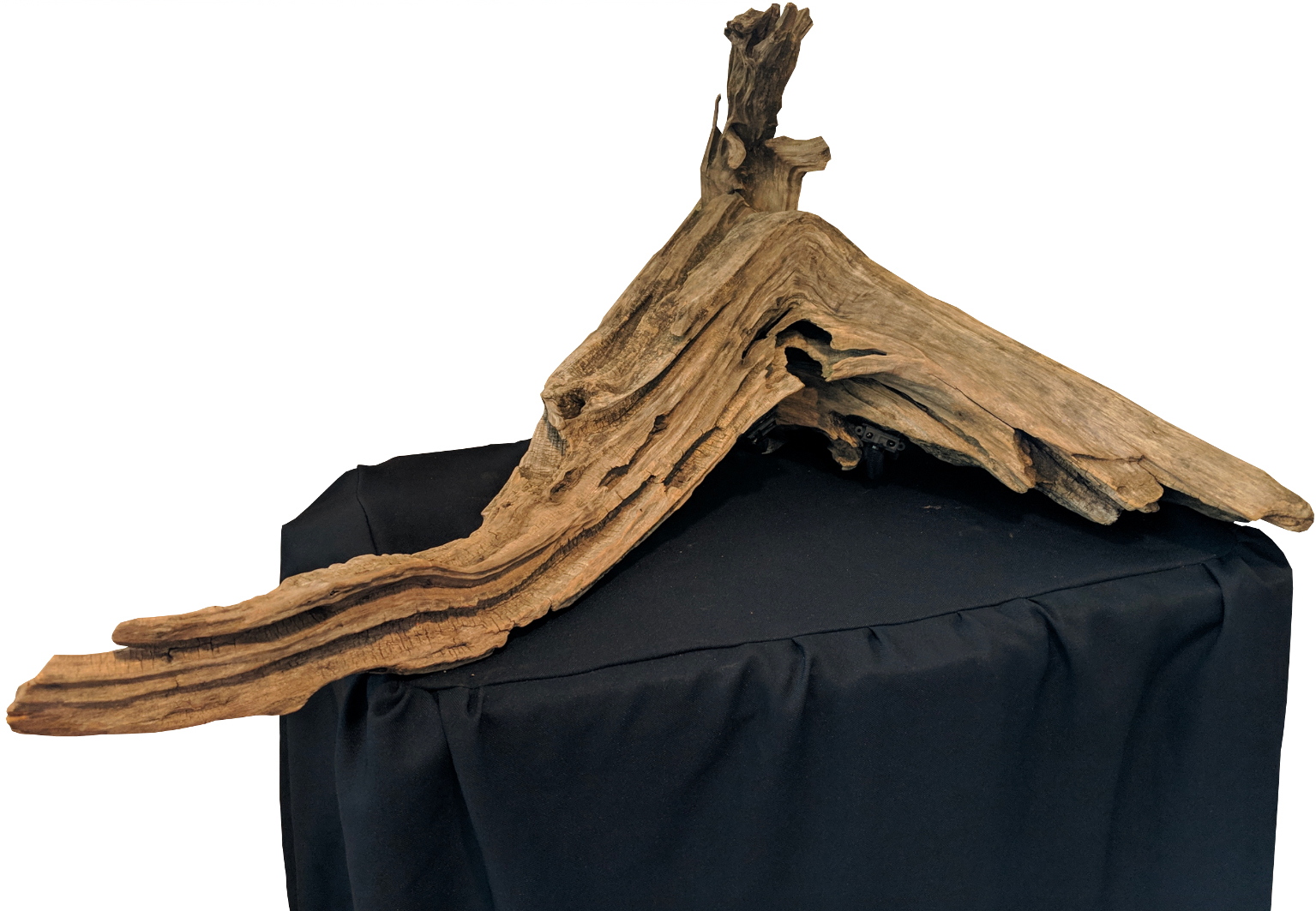What's Old Is New
by Edgar Berdahl, Chase Mitchusson and William Montgomery
By further integrating loudspeaker drivers and amplifiers into sound art, it becomes possible for sound art to directly radiate digitally computed sound and become stand-alone, digital sound artifacts. A diagram of this scenario is shown below. The authors refer to this as Embedded Acoustic Sound Art, which will be exemplified through the projects documented in this paper.

Combined with advancements in digital fabrication, an infinite range of possibilities is enabled today for embedded sound art. However, an infinite range of possibilities can also present a challenge for designers: if there are too many possibilities, then it can be hard to get down to business and make the project specific enough to have a strong artistic meaning or metaphor.
Accordingly, the incorporation of found objects into embedded sound art can be a boon. The present paper investigates this topic using a series of embedded sound art. The authors have found it interesting to explore the boundaries between old and new objects, which has resulted in the creation of an initiative called What’s Old Is New.
Beyond exploring the possibilities of Embedded Acoustic Sound Art, the following discussion aims to describe the interface between old and new objects, as this relates to embedded sound art. Indeed, many messages that old objects communicate are still relevant today. But with embedded technology, sound artists can put a new spin on the messages that these objects communicate.

For Hang-ups, by Edgar Berdahl, a visitor is asked to speak one of his or her hang-ups into a candlestick telephone and then to listen while the rhythms created from the voice signal decay away into the ether

By Chase Mitchusson, Re-Sounding Wild is a demonstration of the actual soundscapes of national parks in real life. Re-Sounding Wild consists of a piece of driftwood with embedded electronics for interactivity. Emerging directly from the wood, nature sounds entice participants to examine the installation. As participants get closer, however, the natural soundscape changes to a human-made soundscape. This interaction is meant to mirror the effect that humans have on natural environments.
William Montgomery’s Zen Garden is an installation that takes the vibrations from raking a zen garden and converts them into musical sound.
Subscribe via RSS
